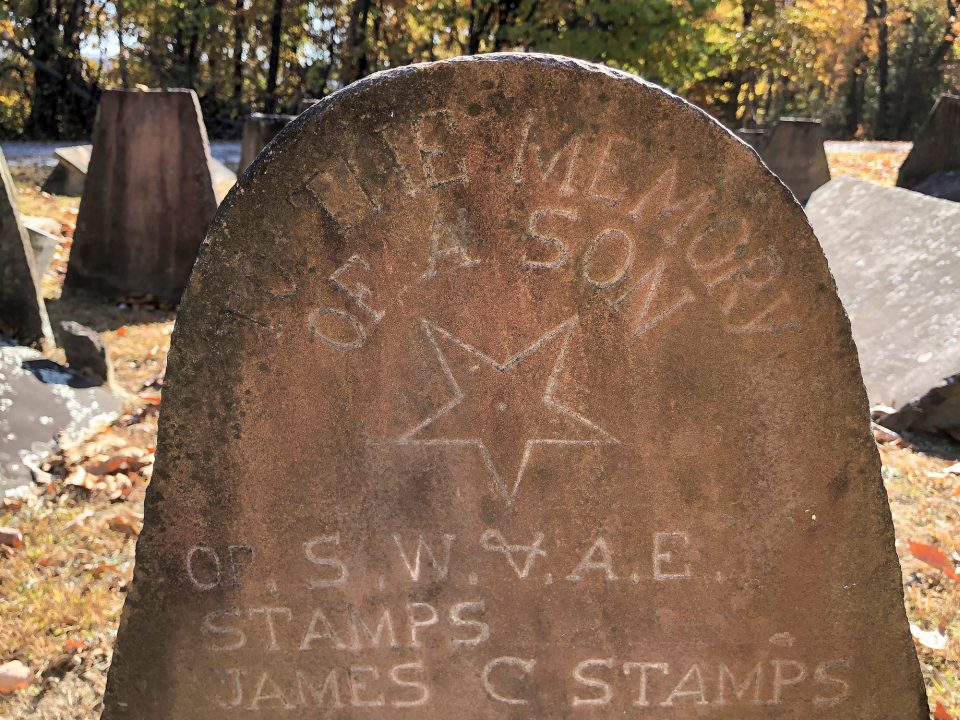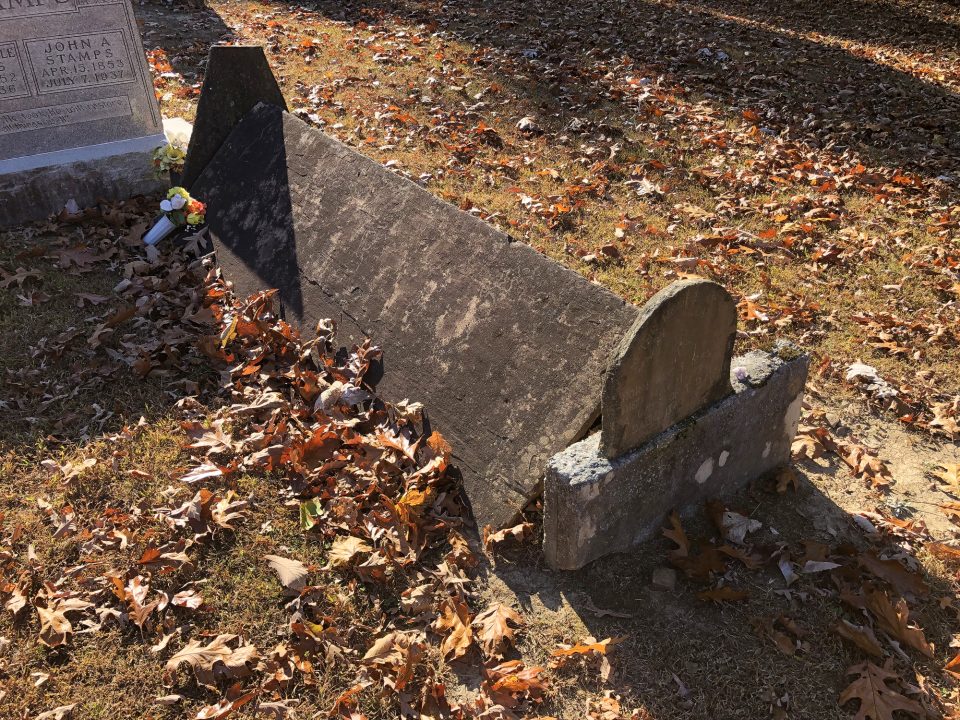Walking around the historic Stamps Cemetery in East Tennessee, which has gained a reputation as a witches’ graveyard
This is the Stamps Cemetery in Putnam County, Tennessee. I traveled the highways and backroads into an isolated spot in the mountains of East Tennessee to visit this burial ground because it is the reputed final resting place of witches.
Aside from the witch legends, it’s also a fascinating cemetery because of the unique regional comb graves.
Video: Walking around “the witches graveyard” of East Tennessee
Are witches really buried there?
It’s safe to assume that the Stamps family were not a coven of witches.
According to this newspaper article published in 2013, stories about the witches’ graveyard may have originated from students at a nearby university who had seen the stars (or pentagrams) on the historic tombstones and thought them to be symbols of witchcraft. The article supposes that students may have enjoyed scaring their friends by telling them the cemetery is haunted.
According to a professor named in the article, the stars may have much more mundane origins.
One possibility lies in the fact that Mr. Stamps — the pater familias — was an illiterate man and rather than sign his documents with an X — as was common practice — he preferred to use a star so that people would know that it was his signature.
Another hunch is that some of the Stamps family may have been masons.
I have another theory that no one has mentioned. The points of the stars, including the center point seen on some of the headstones, may have served as radial center points for drafting the rounded baselines of the text and maybe even the curved tops of the stones.

The tombstone shown above illustrates one example of the inverted stars that have been viewed as symbols of witchcraft. The center point of the star would have been the compass point for drafting the circles that the baselines of the text follow. The lowest point of the star may also have been a center point for the second line of rounded text. The other strange symbol beneath it is simply an unusual rendering of an ampersand. In reality, the stone is a monument to the profound grief of a family that had to bury their young son named James. It says, “To the memory of a son of S.W. & A.E. Stamps.”
The rustic but careful carving on the stone isn’t much more than a deep scratch into the sandstone. Careful examination reveals the lightly scratched guidelines used by the stone carver to keep lines of text straight.


If you participated in this candlelight event, leave a comment to let us know what took place in the cemetery.
Folk medicine and faith healers in the mountains
No matter what the beliefs and practices of this family might have been, mountain culture has always been deeply traditional, with a strong basis in Biblical teachings. The term witch would have been seen as associated with the Devil.
But there’s no doubt that many mountain people did believe in faith healing and folk magic. There were many kinds of healers, from people who used herbal remedies to those whose God-given powers allowed them to heal various ailments. But those practices were always attributed to a higher power, not the healer.
I can attest to this because my own mother, who was born and raised in the mountains of Eastern Kentucky, was a healer as a child.
She was the seventh born and she never met her father because he was killed in an accident while she was still in utero. That combination of factors supposedly gave her special abilities to heal thrush in babies.
She told me that when she was young my grandmother would take her to people’s homes, where she would enter the room without talking, blow into the baby’s mouth three times, and then leave.
I asked her if it actually worked, and she said people told her that it did indeed help babies get well.
As far as I know, that was her only healing ability, but she has at various times in her life seemed uncannily intuitive.
What are comb graves?
The graves located in the Stamps Cemetery are called tent graves — or comb graves — and they are very particular to the mountains in this region of the Cumberland Plateau. Examples can be found across eight states of the South, but it’s primarily a Tennessee mountain phenomenon.
A tent grave consists of two long thin slabs, propped against two triangular end caps, often with a headstone and footstone, although I’ve seen some simpler variations that don’t have the headstone and footstone.
The history of tent graves is a little unclear. People may have put stones over the graves to protect them from animals. Some have speculated that maybe in the rocky mountainous terrain burials weren’t deep enough so stone covers were necessary — but researchers have debunked that in many cemeteries. The first known comb graves were made in 1815 – 1820, and maybe they just became popular among mountain communities.

Thanks for reading.
Be sure to visit me on Facebook, Instagram or Pinterest, or on my website at keithdotson.com.
~ Keith
Sources and Links
A. J. Lambert, “Witches Graveyard — The Truth About Stamps Cemetery”, Megan Trotter, 2013 (PDF)
Tennessee State Library and Archives, “Comb Graves of Tennessee,” Celeste Happeny, 2015

I am drawn to cemeteries myself, I think tombstones make terrific black and white photographs because of their texture.
I enjoyed hearing about your mother’s gift! Fascinating.
Thanks Jeni! I agree about the tombstones.